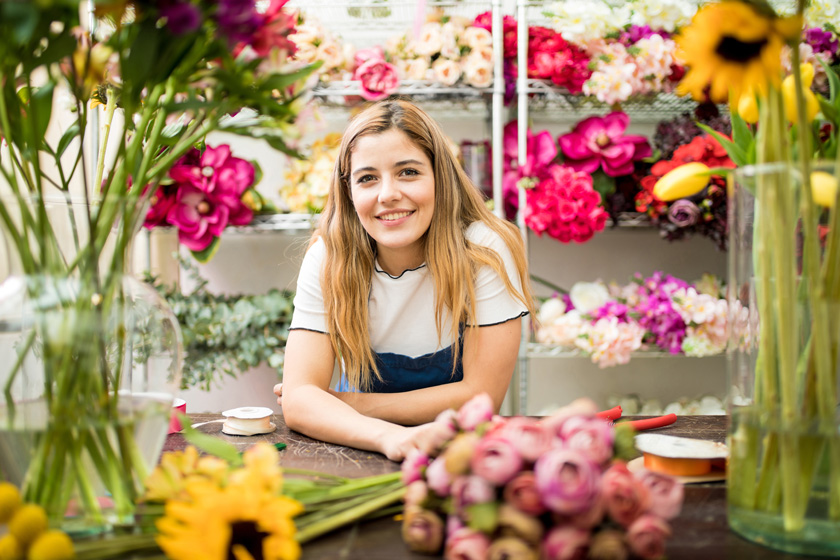Floral Design

Few objects have as much symbolic power in our culture as flowers. When done right, flowers can communicate a range of powerful messages: I Love You, I’m So Sorry, I Forgive You, Congratulations, Good Luck, We’re Proud of You, and on and on and on. The natural beauty and delicacy of flowers reflect our own emotions, and we know subconsciously that when we give or receive flowers, we’re connecting with a person at a level deeper than mere words can express. There is a great need for experienced, knowledgeable floral design experts who can help the general population embrace this powerful tool of communication.
Why Choose Floral Design?
Flowers show up frequently in our culture: dates, decorations, weddings, funerals, and nearly all other significant moments in our lives. But where do these flowers come from and who pieces them together in ways that leave a subtle and lasting impression? Not only are floral designers responsible for putting together appropriate flowers, but they must also do two other important tasks: they typically include ribbons, pins, vases, and other objects within their designs, and they must title their creation in a way that communicates what particularly this arrangement might communicate. In doing so, they take the challenge and guesswork out for the general population, and people will be able to appropriate use their bouquets, corsages, wreaths, and centerpieces with precision. Any moment, whether a dismal funeral or a lavish holiday, will be enlivened with the appropriate floral arrangement. More and more schools offer online floral design course training, find your school below!
Find your Floral Design Training Courses
The number career for floral designers is within florist shops. Either the designer owns the shop, or they are an employee who is specifically responsible for creating floral designs. When owning a business, of course, one of the main tasks will be to cater to customers’ needs by providing a wide array of designs. Frequently, a set of “stock” designs can be displayed in a portfolio or preserved throughout the shop, and customers can see for themselves what they like and adapt their custom ideas from those. But when running a florist shop, the floral designer must also concern themselves with other business-oriented tasks, including marketing, accounting, management, and ordering. If you’re only working for, not owning, a floral shop, then you are free to construct floral arrangements based on the needs of the customers, and you would not have to concern yourself with other needs of the business. Of course, one position might be more lucrative, but the other would require much less work and stress regarding tasks you’re not entirely interested in. Either way, you are benefitting the public by providing them with the delicate floral designs they need that they cannot procure anywhere else.
Since flowers are so prominent, there are other prominent opportunities for floral arrangements as well. If not working at a florist’s shop, you could consider a career making floral designs for department and grocery stores. Although the same range and sophistication might not be available here, you will still have countless opportunities to exhibit your skills and perform your passion by continually creating new designs for individuals to communicate through. Since flowers are incredibly important to the way that we communicate – and flowers have always been important for this – the floral designer will always have an important position in society, helping us to communicate our feelings one arrangement at a time. Research and of the floral design training programs listed on this site to get started reaching your career goals.
